How to determine the gender of a red-eared turtle?

Gender refers to the mandatory information that is required when buying a new pet. This helps to choose a name for a new family member, as well as choose the right partner if there are plans for offspring. Practice shows that sex determination of a red-eared turtle is not an easy task. Therefore, it is worth considering how to deal with it competently.

How to determine gender by carapace?
Red-eared turtles are ready for breeding at the age of 4-5 (males) or 6-8 (females) years. By this time, they have signs by which you can recognize their gender without much difficulty. At the same time, experienced people are able to solve this problem when their pets are 1-2 years old. Knowledge of physiological and behavioral differences between representatives of different sexes helps in this.
Male and female water turtles are distinguished by the shape of the lower part of the shell (plastron). Therefore, to determine the sex, you will have to turn the pet upside down.
- If the plastron is wide, with a flat surface, then this is female.
- The lower part of the male's shell is longer and elongated. Towards the tail, it tapers, which is why it acquires the shape of the letter V. In addition, the male plastron is slightly concave, which facilitates the mating process.

And with age, these features will become more evident.
How to find out the gender by the length of the claws?
You can distinguish a female from a male aquatic turtle by its claws. For female representatives, they will be shorter and blunt. Male claws are naturally longer and sharper.Otherwise, it will be difficult for him to stay on the shell of the female at the time of mating. In addition, the legs of the male turtle have more pronounced femoral spurs and small scales on the hind legs.
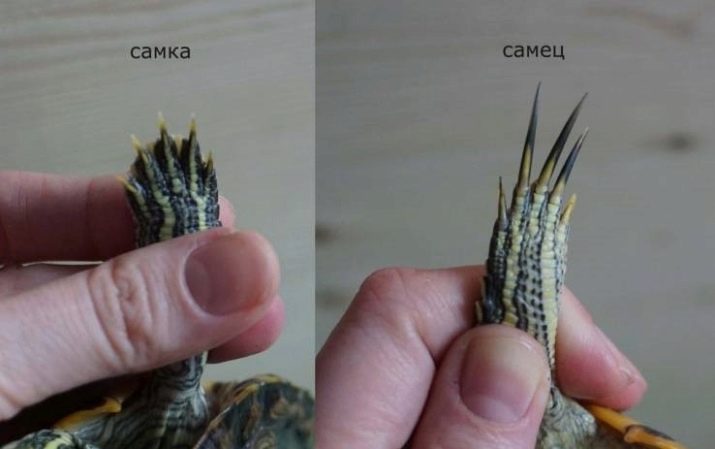
Experts warn that this method does not always give accurate information... The reason lies in the peculiarities of keeping turtles in captivity. So, for their comfortable living, an island is installed in the aquarium, which they need to relax outside the water.
If the islet is made of very durable material, the male can easily grind off his claws, trying to climb on it. As a result, its claws in length and shape will differ little from the claws of the female.
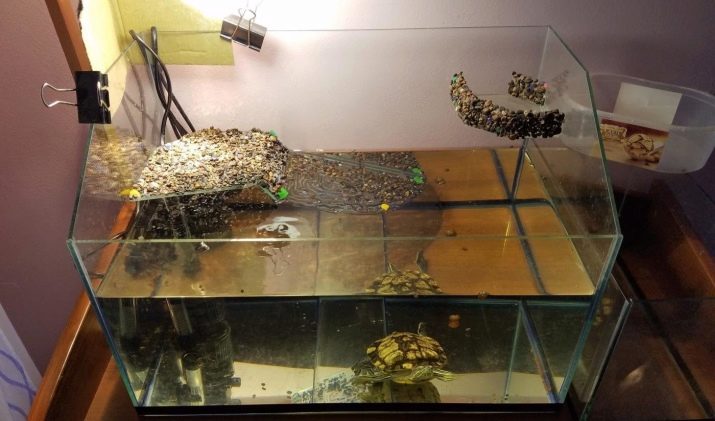
Therefore, in order to truly understand what gender the turtle is, you need to use this method in combination with other methods.
Features in behavior
Gender affects character. Females are mostly calm and peaceful. They prefer either to swim for a long time, or to rest on the island. They are less likely to suffer from bouts of aggression, and attack a person only if they see him as a threat.

The behavior of males is more active. They like to change their activity more often. Therefore, lying on land quickly turns into another swim. The behavior of male red-eared turtles is more aggressive. The likelihood of suffering from their bite is very high.
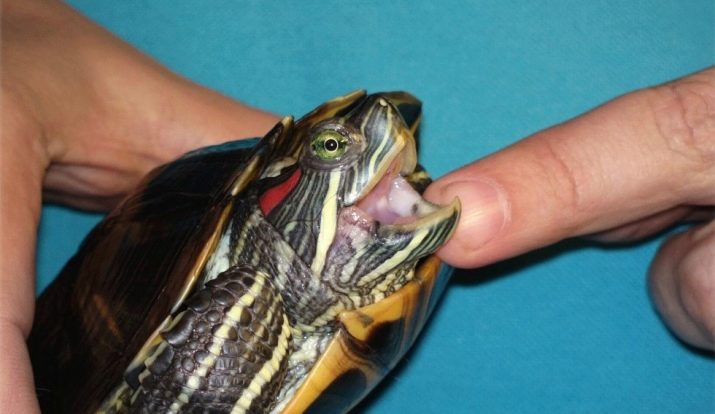
Behavioral features should be observed when the reptile is in a calm and comfortable environment. So, when moving to a new aquarium, the turtle will behave more agitated. Usually her condition stabilizes after 1-2 days after the "housewarming". Attempts to get out of the created reservoir indicate not increased activity, but dissatisfaction with the conditions (for example, the temperature of the water). The condition of the pet can become an order of magnitude calmer when the necessary changes are made by the owner.
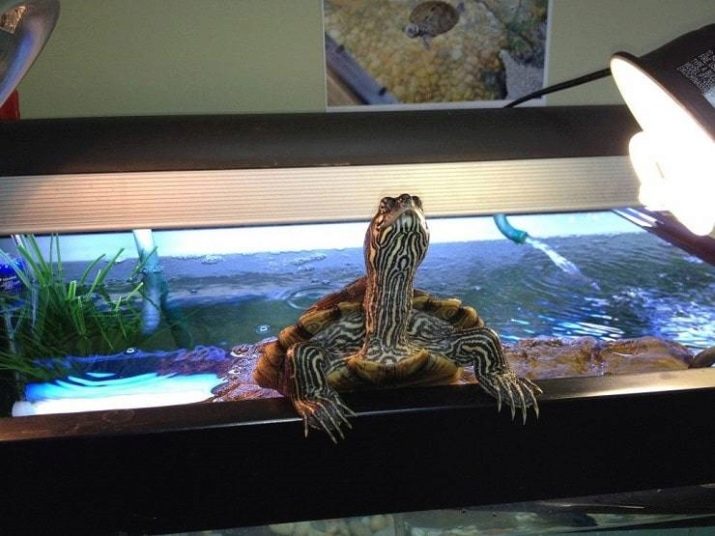
Distinguishing between different sexes is easier in a group. If there are two females or two males in the same territory, they will not get along with each other. In the first case, the pet will see a hindrance in the neighbor when laying eggs. And the male will do everything possible to drive the stranger out of his territory. Therefore, peaceful coexistence is possible only between opposite-sex turtles. The differences in behavior between females and males become especially evident during the mating season. Female representatives are more relaxed. They take an observant position, choosing the most worthy candidate for themselves.
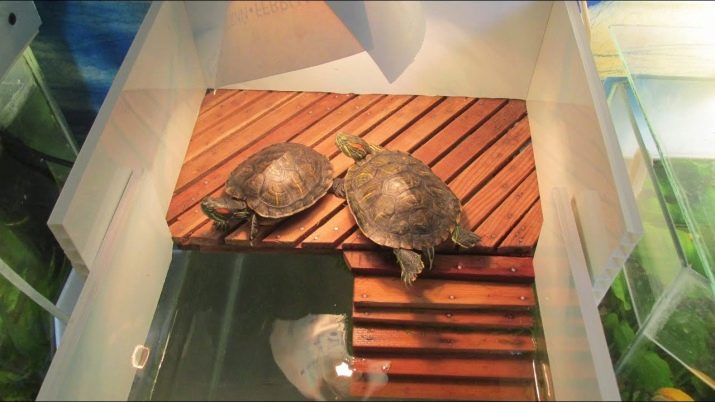
Male behavior during the mating season becomes active. In an effort to attract the attention of his partner, he will widely swing his paws, perform funny head nods. His behavior will show great persistence. Some turtles are able to swim backwards in front of their chosen one. Others will relentlessly pursue the female, biting her neck. The mating season of turtles is accompanied by specific whistling sounds.

However, they can equally come from both sexes, and therefore are not considered as distinguishing features.
Reproduction of red-eared turtles occurs through the laying of eggs. Moreover, the females do this, even if there was no fertilization. If the turtle tries to dig out the bottom of the aquarium with its paws, it means that it is trying to dig a hole for laying. Here we can conclude that this is a girl.
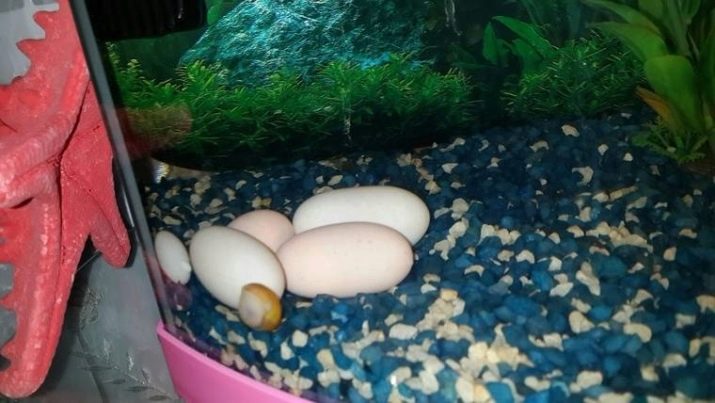
Other distinguishing features
You can also use other methods to distinguish a boy from a girl.
- The female is always larger than the male in size, as she bears, lays and incubates eggs. This check can only be done by comparison. In this case, 2 individuals of the same age are taken, otherwise the test results will be incorrect.
- You can determine the gender by the tail and the location of the cloaca.... The tail of the male is longer than that of the female.It also has a large width due to the penis. The cloaca is located closer to the end, it resembles a straight line in shape. The tail of the female is shorter. The cloaca is located closer to the shell. Its polygonal shape is more like a star. These gender differences become more apparent with age, as the tail lengthens as it grows.
- Females have an additional opening in the tail area for laying eggs. If it is not, then this is a male representative.
- Only zoologists and experienced breeders can distinguish the sex of turtles by their muzzle. In males, this part of the body is elongated, and the upper jaw is distinguished by whitish tones. The female's head has smooth, rounded lines.
- Red-eared turtles stand out from other members of their genus red stripe on the head.


To determine the sex of a pet, some resort to laboratory tests.
- Hormonal blood test... Increased testosterone levels are common in boys.
- Ultrasound, by means of which the presence or absence of ovarian follicles is determined. The presence of this organ betrays the female.
- X-ray... It is easy to recognize the male sexual organ in the picture.
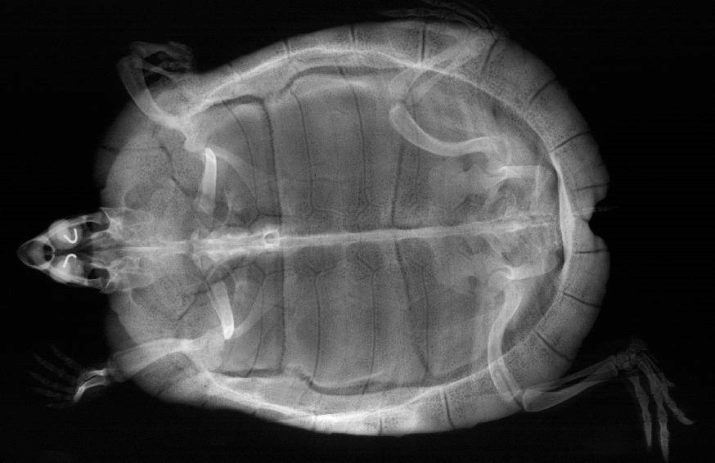
However, these methods are effective when the turtle is over 7 years old. Before this age, sexual characteristics may not be fully formed, and the procedures will not give an accurate result.
To summarize: knowledge of gender is important to anyone who maintains or breeds red-eared turtles at home.... This will help you choose the right name for your pet, to which it will respond in the future. In addition, in families with children, it is recommended to keep females, who are more calm and peaceful in nature. The increased aggressiveness of males, especially during the mating season, increases the risk of being bitten by a turtle.
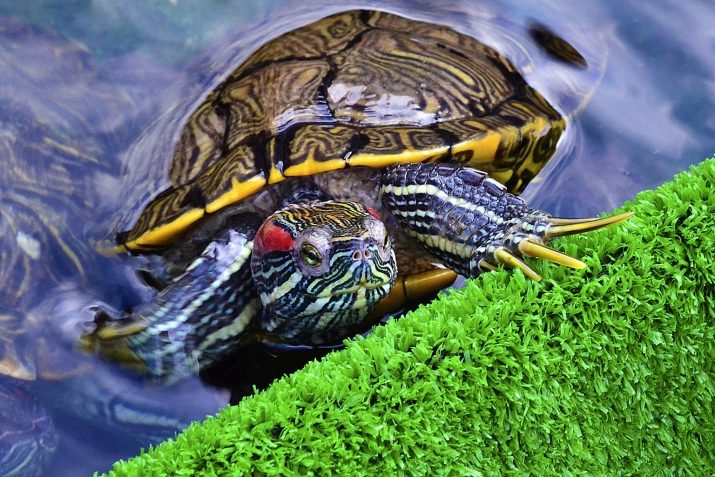
Gender is of particular importance when reptiles are mated for breeding purposes.... The presence of same-sex turtles in the aquarium will not give the desired result and will also lead to conflicts. It should be understood that determining the sex of small turtles is impossible even for an expert. Young animals are the same in size, their genitals are not formed, and there are no specific hormones in the body. The first signs of whether the purchased reptile is a female or a male can be seen at 2 years old, and then one should not hope for an accurate result. Pets' puberty occurs on average by 6-8 years, then the main conclusions are drawn.

Therefore, an individual is considered female if she has:
- flat and rounded lower part of the shell;
- short and blunt claws;
- calm and peaceful character;
- relatively large size;
- faint red stripe on the head;
- small and short tail;
- the star-shaped cloaca is close to the carapace;
- rounded outlines of the head;
- there is a habit of digging up the bottom.

Males are identified by:
- smaller in comparison with the female in size;
- concave plastron, which is longer and tapering towards the tail;
- long and sharp claws, if they are not blunt on the island;
- increased activity during the mating season;
- a more agitated and aggressive character;
- greater initiative in protecting personal territory;
- a brighter stripe on the head;
- thick and wide tail;
- a simple cloaca located closer to the end of the tail.

If there are 2 turtles in the aquarium, you need to take a close look at their relationship.... Different-sex individuals will peacefully relate to the presence of a neighbor on their territory. And during the mating season, bright, stormy courtship from the male will be observed. Mating is usually accompanied by light neck biting, whistling and squeaking. This is very different from the situation where the turtles ignore each other. Or they enter into open confrontation, trying to survive a competitor.
The neighborhood of two females can be left unchanged if they do not injure each other, and the owner has no plans to breed them.However, two males should not be kept in the same tank. Otherwise, the reservoir will turn into a battlefield, where a stronger male representative will surely survive a competitor.
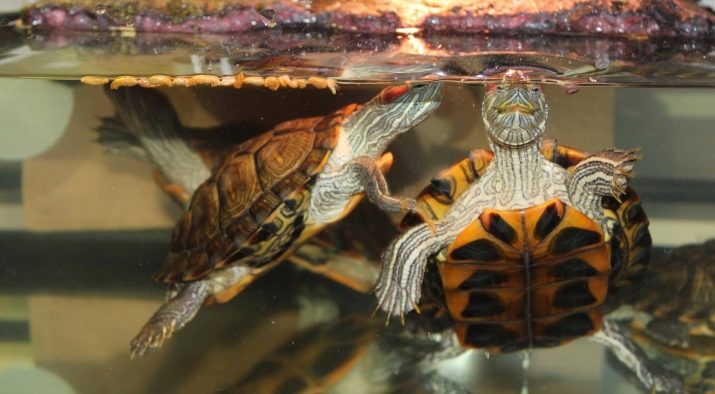
If you find strong competition between turtles, you should resettle them in different aquariums.








